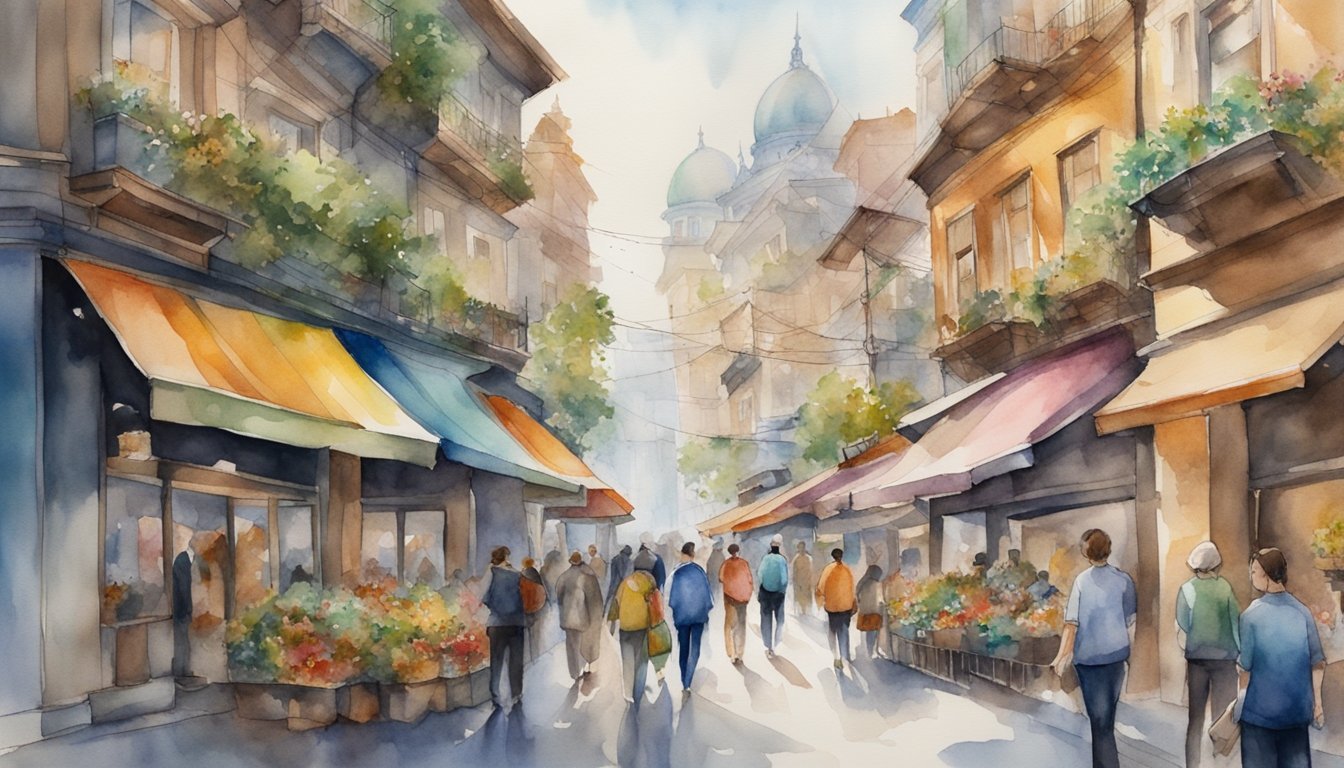Understanding Hyperphantasia
Hyperphantasia is a remarkable psychological phenomenon that allows individuals to experience extremely vivid mental images. This section delves into the nature of hyperphantasia, its place within the wider spectrum of imagination, the science behind it, and the methods used to evaluate the vividness of an individual’s imagery.
Defining Hyperphantasia
Hyperphantasia is characterized by the ability to produce mental images with incredible clarity and detail. Unlike typical imagination, those with hyperphantasia can perceive images in their mind’s eye that are as vivid as real seeing. This can involve all senses beyond just visual, encompassing smell, taste, touch, and hearing.
The Spectrum of Imagination
Imagination exists on a spectrum, with hyperphantasia and aphantasia lying at the extremes. Aphantasia refers to the inability to visualize mental images. The prevalence of hyperphantasia and its counterpart is a subject of interest in cognitive and behavioural neurology, providing insight into the diversity of human experience.
Neurological Foundations
From a neurological standpoint, imaging studies such as functional magnetic resonance imaging (fmri) illuminate how hyperphantasia may arise from distinct patterns of neural activity. Areas such as the frontal cortex and primary visual cortex, which are heavily involved in processing visual experiences, display unique activation patterns when individuals with hyperphantasia engage their imaginations.
Measuring Imagery Vividness
To objectively study hyperphantasia, psychologists employ tools like the Vividness of Visual Imagery Questionnaire (VVIQ), which quantifies the vividness of visual imagery. By doing so, they can compare the phenomenological experiences across individuals. These measurements reinforce the concept that hyperphantasia exists within a varied landscape of mental imagery capabilities.
Hyperphantasia in Society and Culture

Hyperphantasia’s extreme vividness in mental imagery influences various facets of society and culture, from the arts to individual well-being.
Impact on Creativity and Art
Individuals with hyperphantasia often display a remarkable ability to visualize complex scenes and concepts, which can substantially enhance creativity and artistic expression. Artists like Blake Ross and filmmakers such as Ed Catmull may attribute aspects of their imaginative capabilities to this heightened cognitive style. Their ability to foresee scenes in detail before they are created is a testament to the potent impact hyperphantasia can have on the arts. Engaging in “mental time travel,” these creative minds are able to recall autobiographical memories with vivid detail, enriching their storytelling and artistic depth.
Hyperphantasia and Mental Health
The correlation between hyperphantasia and mental health is a complex territory. While some may find the intense visual experiences enriching, it can become overwhelming for others, potentially contributing to mood disorders or PTSD. Researchers like Emily Holmes have started to explore how hyperphantasic individuals process traumatic memories differently, which might influence therapeutic techniques and interventions for managing distressing visual imagery.
Personal and Social Insights
Hyperphantasia enhances one’s capacity for empathy and understanding by allowing a deeper dive into one’s own experiences and those of others. Scholars have proposed that this immersion in rich autobiographical memories aids one in navigating social interactions with enhanced emotional depth. In tandem, the Exeter study suggests genetics may play a role in hyperphantasia, which, alongside environmental factors, can shape one’s cognitive style and personal experiences.
Notable Figures with Hyperphantasia
Historically, influential figures like scientist Francis Galton have been documented to exhibit hyperphantasic qualities. Contemporary individuals, such as neurologist Oliver Sacks, have also brought attention to the intricacies of human experience, including those influenced by conditions like hyperphantasia and its counterpart, congenital aphantasia._PUBLIC “-//W3C//DTD HTML 4.01 Transitional//EN” “http://www.w3.org/TR/html4/loose.dtd”>

